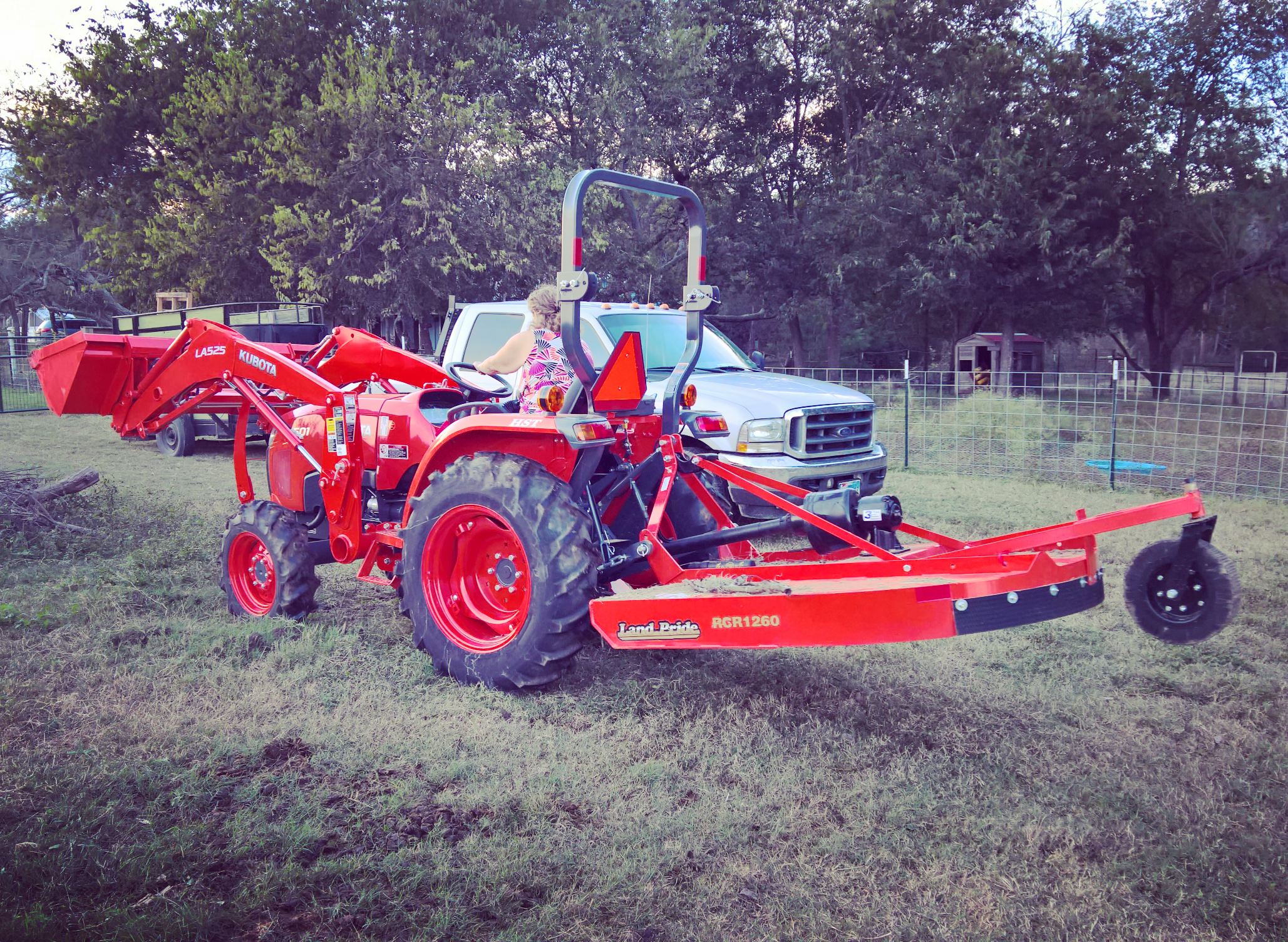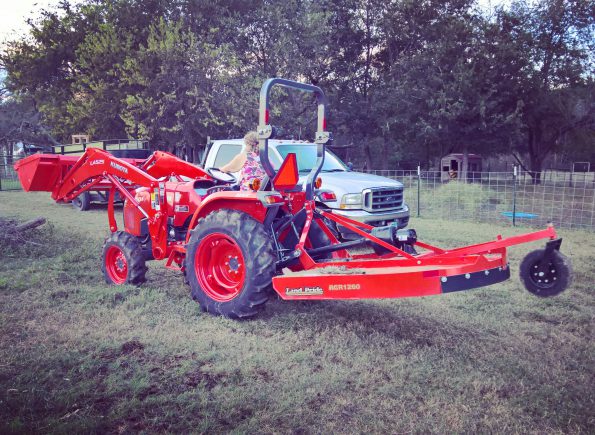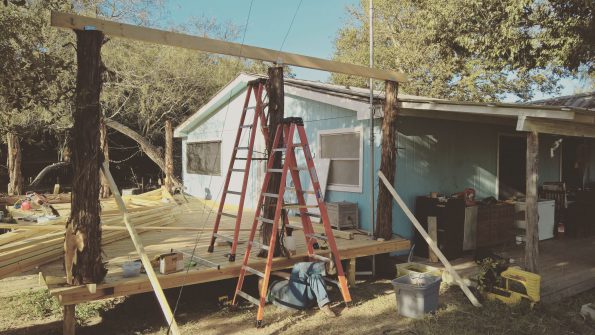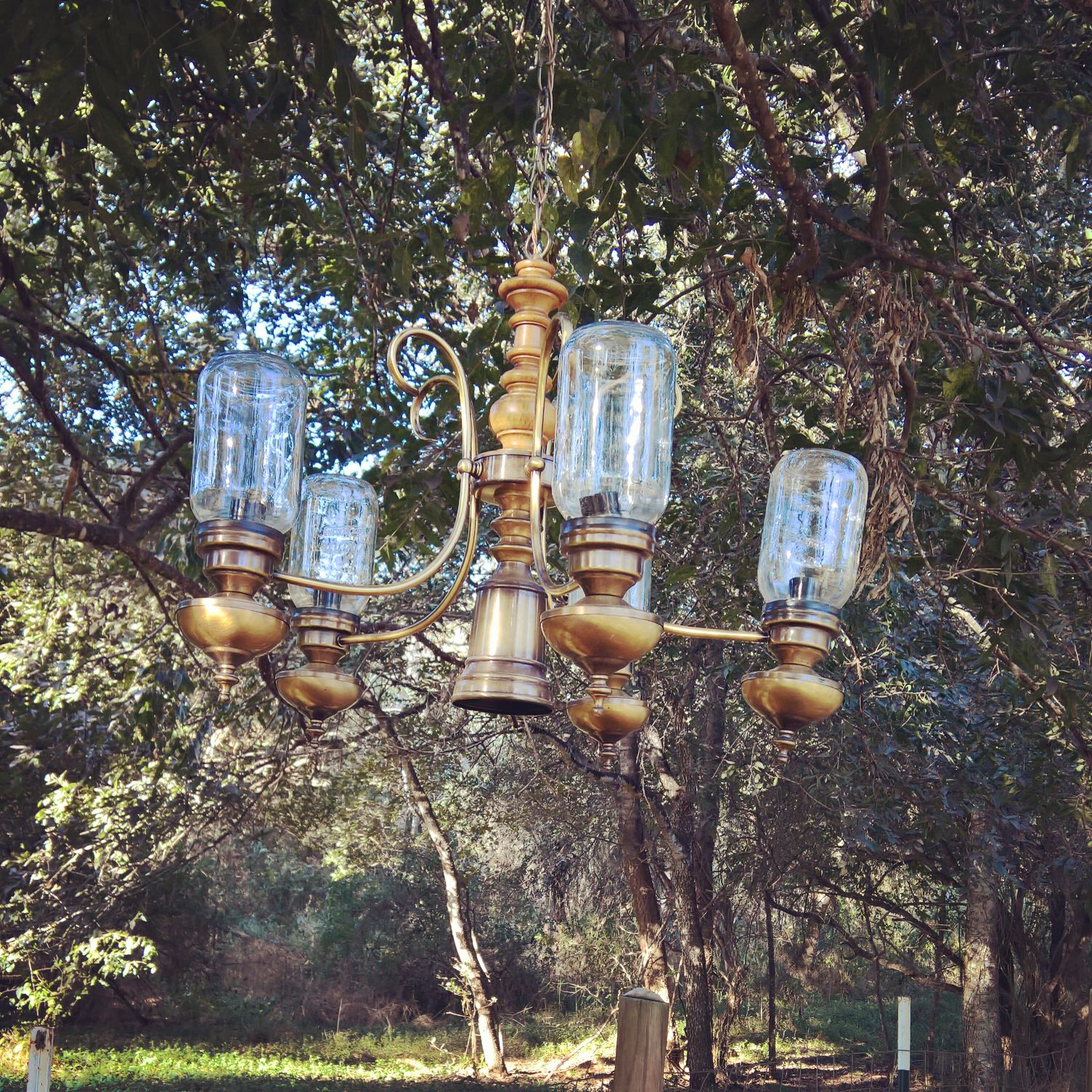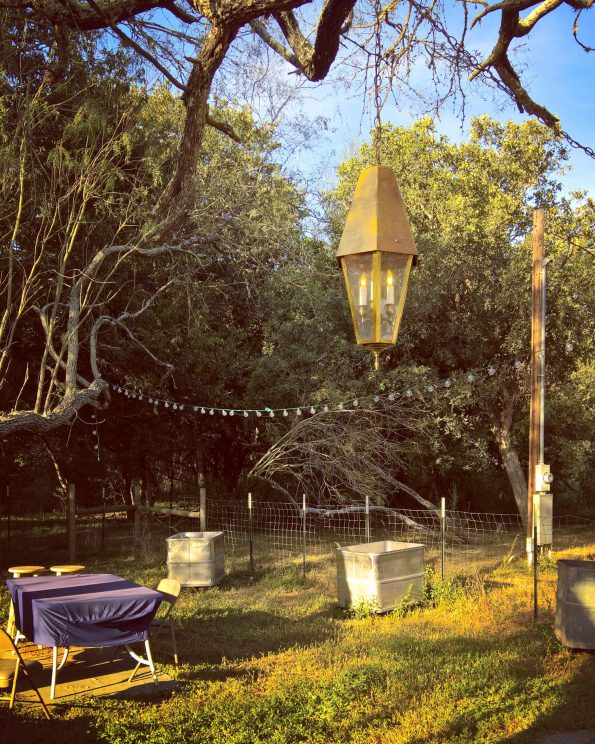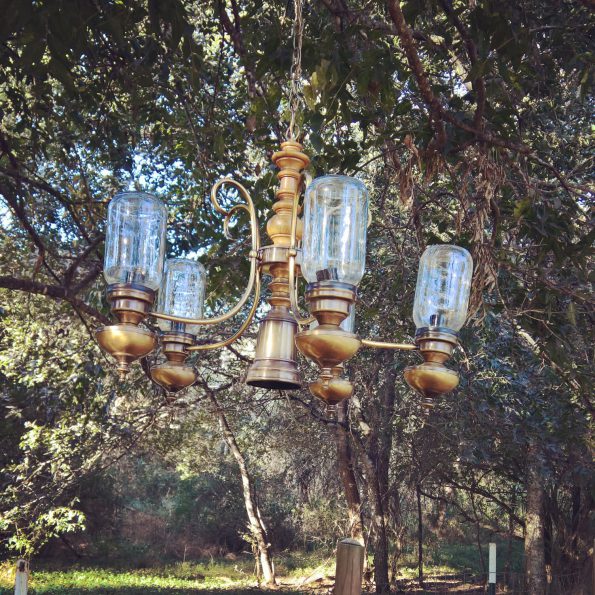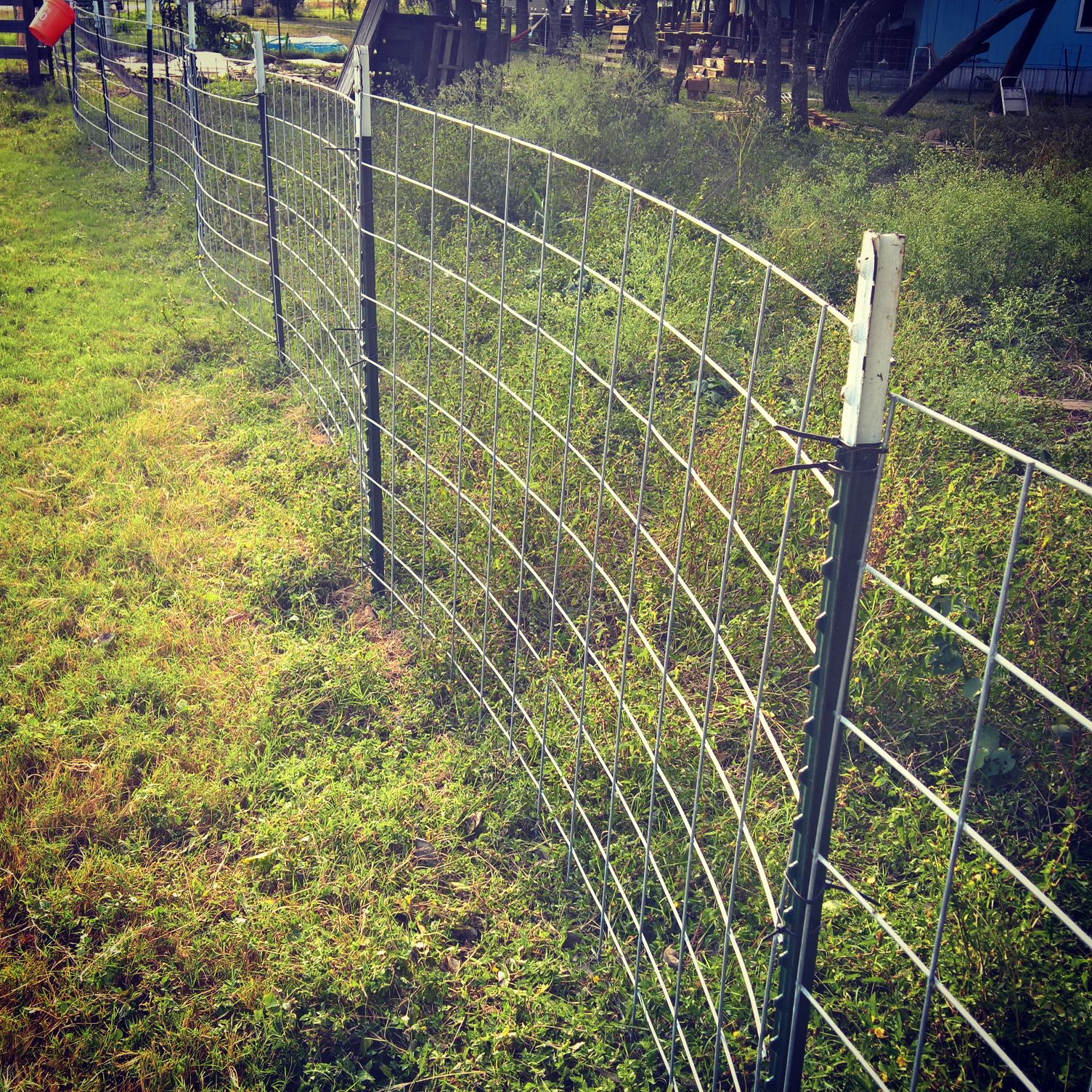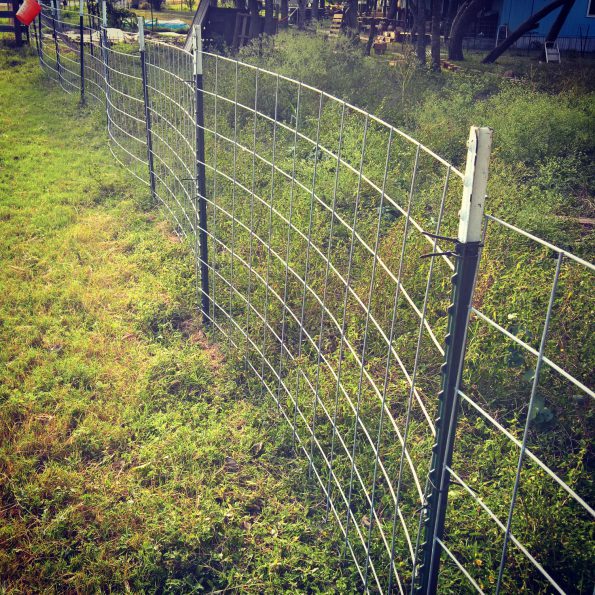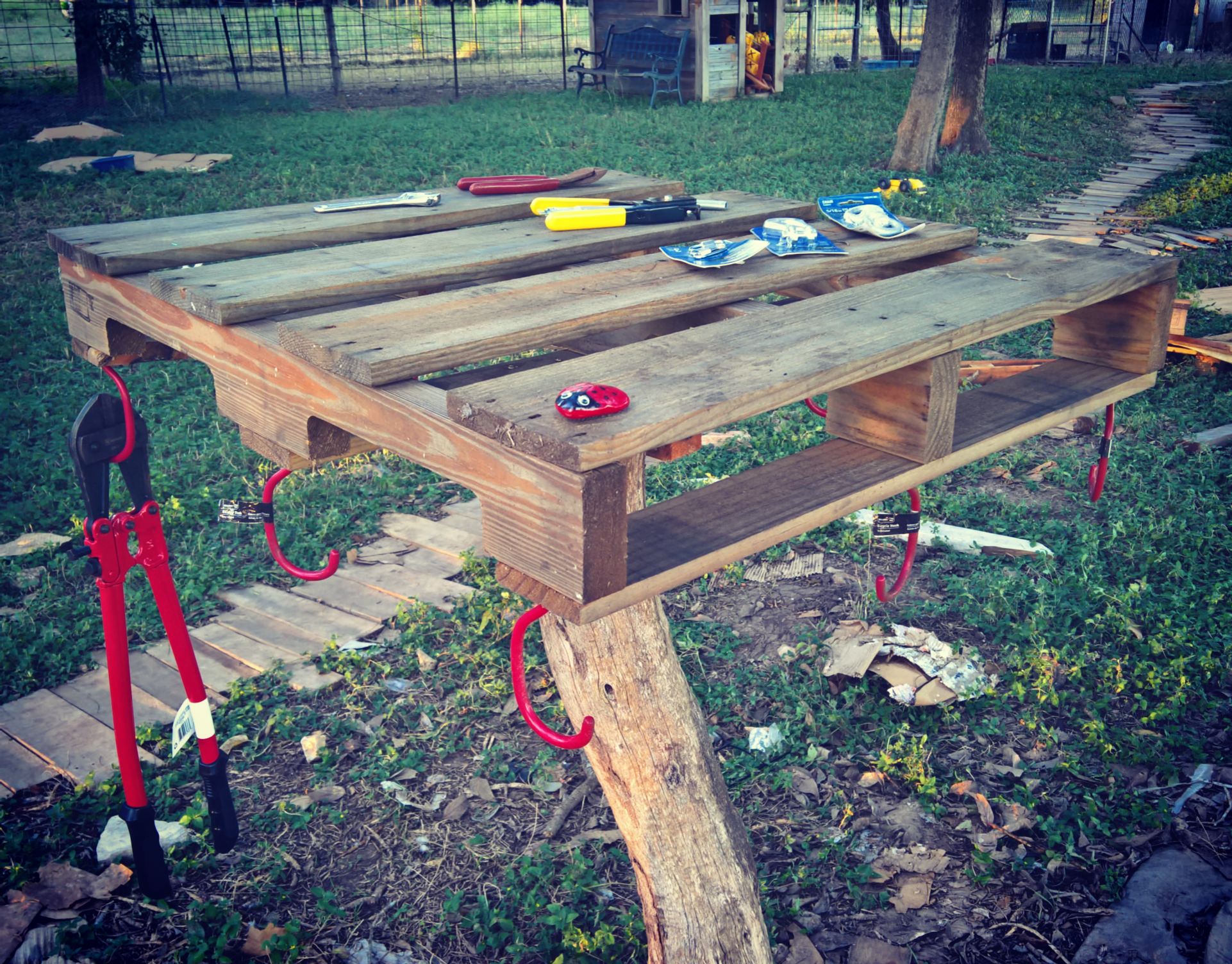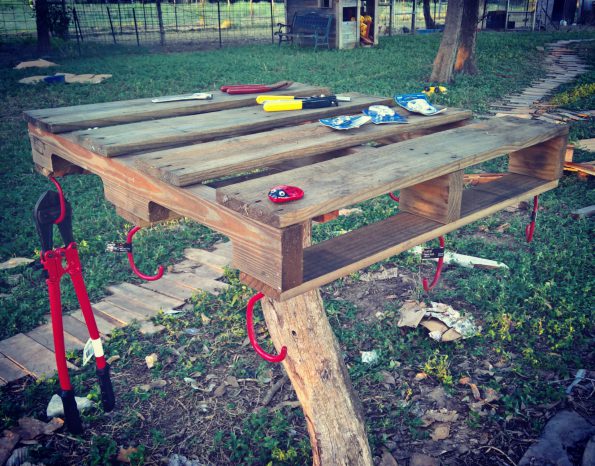Kubota L2501 with a rotary cutter and loader from Ewald Kubota in Seguin, Texas. We also bought a box blade to help cut in some swales, and a grapple to deal with a lot of brush we have lying around the property. Unfortunately, there’s a backlog on the grapple, so we don’t have it just yet. Of course, that hasn’t stopped us from breaking in the new toy…I mean tool.
Category: Farmchitecture
Raising the Rest of the Roof
A very special thanks to Bill Hancock, Joe Tramonte, Patrick McMillin, and my Dad for their tremendous help raising the trusses for our outdoor kitchen.
Bill showed his building and engineering prowess many times throughout the day, not the least of which was balancing atop an 8-foot ladder while swinging from the trusses.
At the end of the day, we got the remaining seven trusses up…and even put up the center cross-beam.
Could not have done it without their help. Thanks again so very much, my friends!
Raising the Roof
Continuing work on the outside kitchen area (prior shots here). Sure am glad my wife isn’t afraid of hard work. She keeps me going…and honestly, she outworks me most of the time. Then again, she is much younger than I am….
The Outside Kitchen
Continuing with the build of the outdoor kitchen and living area. Thanks to Michael Laprise and Chris Coats for helping us get the foundation set. Melissa and the kids finished the decking, and we all built the trusses (which you can see lying on the deck). Still a ways to go, but we’re getting there. When it’s done, we’ll have a fun and useful outdoor kitchen area and family room. Can hardly wait!
Lanterns in the Back Yard
Stopped by the local Habitat for Humanity store the other day and found a couple of light fixtures for the “entertainment yard” project. As they were retrieving the one below from the display, they accidentally broke two of the shades. We bought it anyway, and it turns out that narrow-mouth quart jars work perfectly as shades.
Thoughts on Fencing
We were blessed to find a property that was already fenced on all sides, and crossed-fenced in places. But it still needed some more “cordoned off” areas for our purposes. We considered a couple of options, and ultimately decided on “T-posts, cattle panels and zip-ties” as our immediate fencing of choice. We chose the cattle panels and zip-ties approach over more traditional methods for a couple of reasons.
First, it’s easy to do.
While 8-foot cattle panels are more expensive per foot than welded wire fencing, with the lengths we were dealing with, they weren’t prohibitively expensive. And they’re relatively easy to transport and get into place. So easy, in fact, that our kids (eight, seven, and four) helped with the fencing projects. The two older ones got the panels into place, Melissa pounded in a T-post, and they all helped with zip-tieing them to each other and the T-posts.
Second, it’s easy to undo.
If we ever decide that the fence needs to be shaped differently, or in a different location entirely, it’s fairly easy to undo. Just clip the zip-ties and dig up the T-posts. In other words, it’s an immediate solution – but it doesn’t have to be a long-term solution. On the other hand, if we decide that we hit the nail on the head in terms of where we want fencing, we can replace the cattle panels with welded wire – or keep the cattle panels, but use wire to hold the fence together (rather than zip-ties).
Repurposing a Pallet
Craigslist’s free section is a wonderful resource. We’ve found many interesting items there – including a place nearby that always has an ample supply of pallets of all shapes and sizes. Melissa decided to make one into a garden work bench. We had a dead tree in the garden, and rather than uproot the thing, she cut it to a comfortable height and mounted a pallet to the trunk. “C” hooks around the bottom edges make for easy hanging for tools, buckets, etc.
